

William Stopford
Every SUV, ute and van discontinued in Australia in 2025
5 Hours Ago
Loyal Suzuki owners should feel right at home in the Vitara Turbo, though it has strong suits that'll appeal to other small SUV shoppers, too.
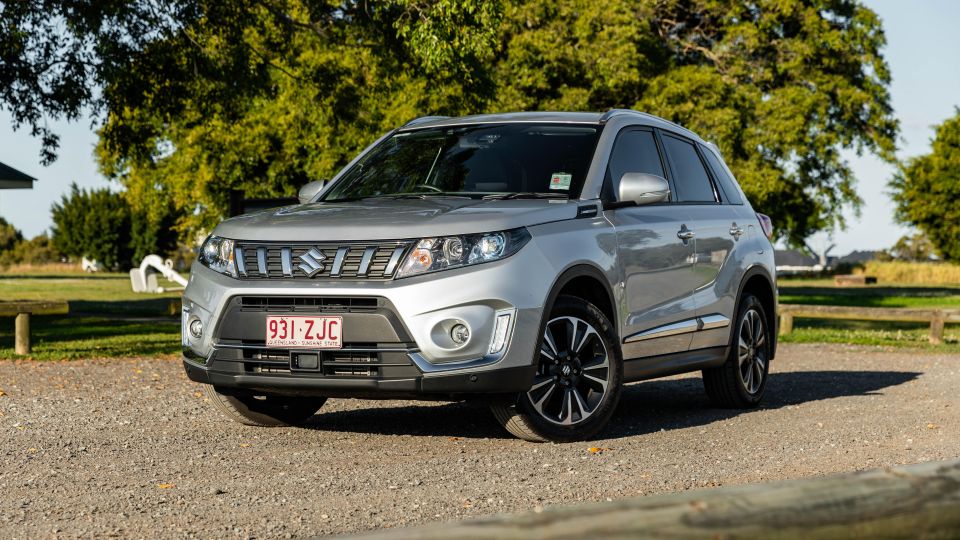
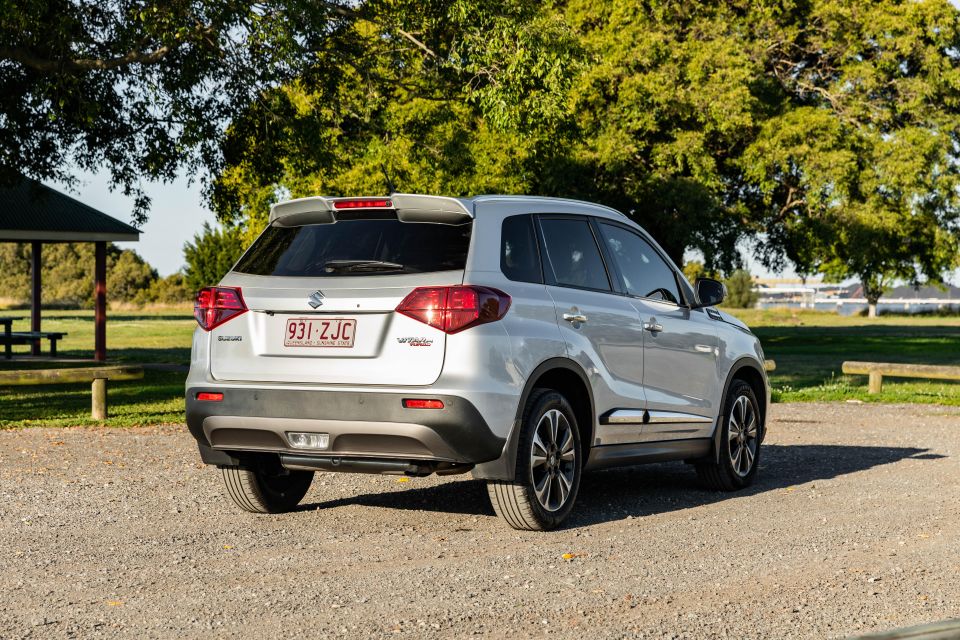

News Editor
New from
$25,490
excl. on-roads

News Editor
New from
$25,490
excl. on-roads


News Editor
New from
$25,490
excl. on-roads

News Editor
New from
$25,490
excl. on-roads
Quickly see how this car stacks up against its competition. Select any benchmark to see more details.
Where expert car reviews meet expert car buying – CarExpert gives you trusted advice, personalised service and real savings on your next new car.
The small SUV segment continues to explode in popularity, and small car specialist Suzuki is naturally well-placed to rack up some sales.
It actually offers two options in this segment: the S-Cross and the Vitara. The S-Cross is a little more bowls club while the Vitara is a little more night club, and it’s the latter that’s vastly more popular.
The current generation was introduced in 2015, wearing a nameplate previously used on more rugged vehicles that nevertheless tended to attract a similarly youthful clientele.

A 2019 Series II update added some much-needed active safety technology to the line, albeit not to the base model.
It’s still a handsome little thing, if a little nondescript. Suzuki offers some funky colours to spruce it up, like Atlantis Turquoise, Solar Yellow, and Savannah Ivory.
We’ve put the mid-range 2021 Suzuki Vitara Turbo to the test to see if it is still worth considering against newer, fresher rivals.
Recent price increases have seen the Vitara Turbo climb by $2000 to $32,490 before on-road costs, or $34,490 drive-away based on a Sydney postcode.
Metallic paint, like our tester’s Silky Silver, is an additional $695, while a two-tone exterior treatment is $1295.
There’s a dizzying number of similarly-priced rivals across the light and small SUV segments – you needn’t worry about the distinction between the two segments, as sometimes a light SUV is larger than a small SUV.
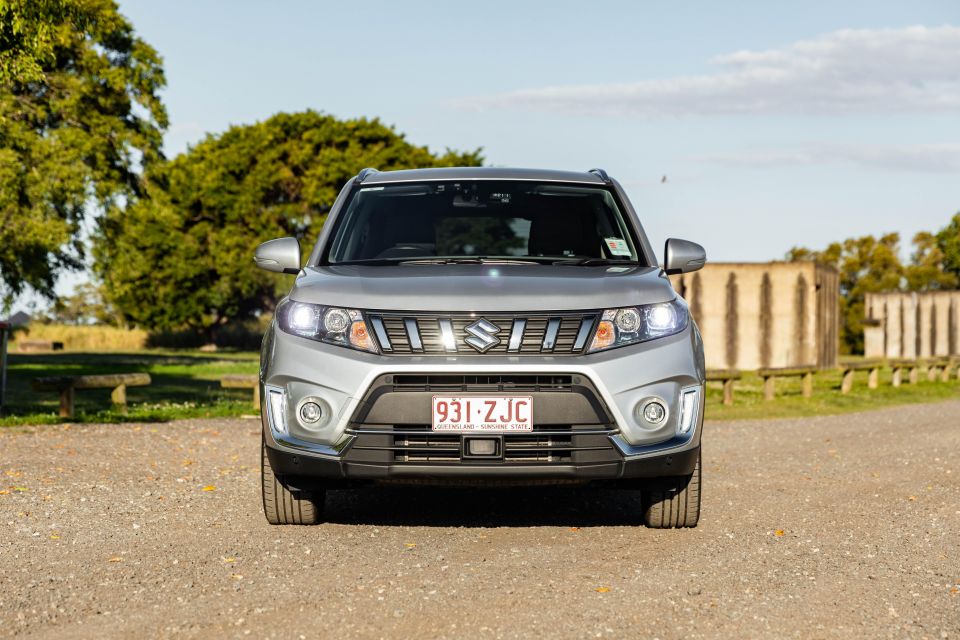
The Vitara Turbo is priced against a range of rivals including:
All prices exclude on-road costs unless specified
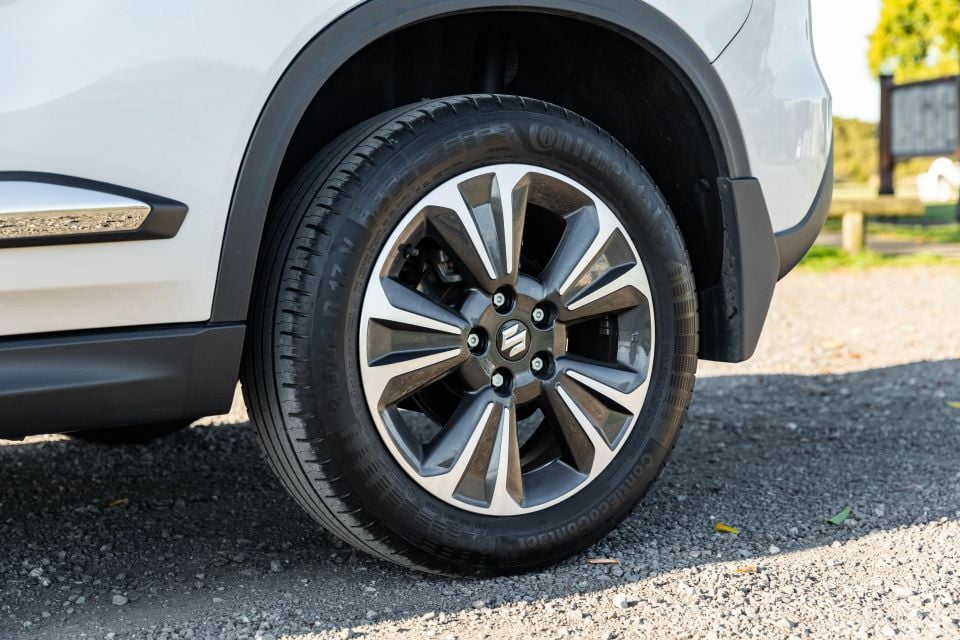
Buy your new car without the stress. It's fast, simple and completely free.

Great service from Travis and team, second time I have used this business would not hesitate to recommend them to anyone
Craig C.
Purchased a Ford Ranger in Sunshine Coast, QLD
CarExpert helped Craig save thousands on his Ford Ranger, now let us save you on your next new car.
Find a dealStandard equipment on the Vitara Turbo includes:
That’s in addition to features found on all Vitaras, including:
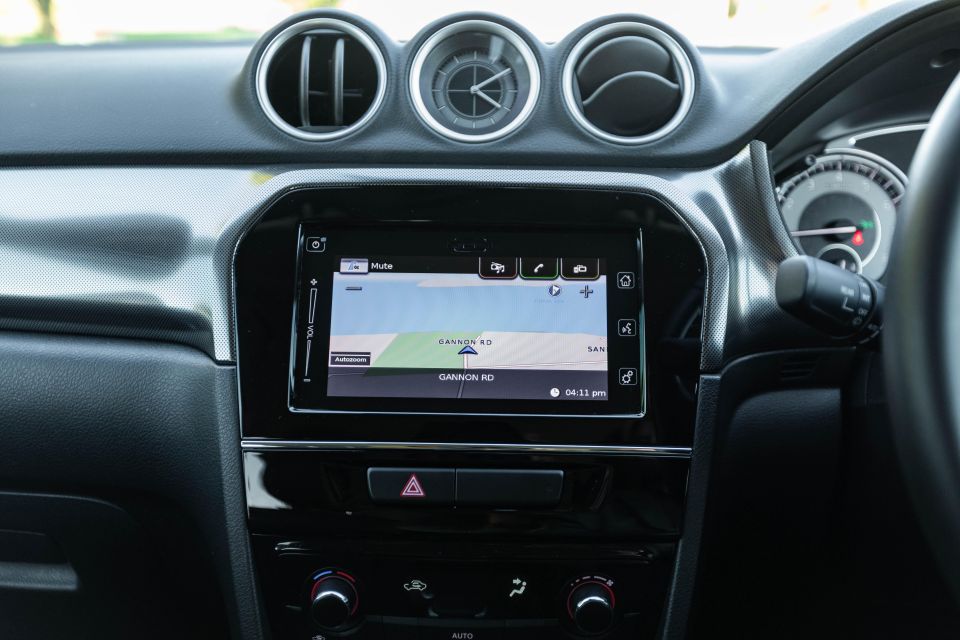
There’s no DAB+ digital radio or electronic parking brake, while the Vitara Turbo misses out on some luxury items found in value-packed Chinese rivals such as a powered driver’s seat, panoramic sunroof, and a digital instrument cluster.
You can get a sunroof if you step up to the Vitara Turbo AllGrip (AWD), however, it commands a $5000 up-spend.
Overall, it stacks up reasonably well against Japanese and Korean competition, though that touchscreen is a bit small in a segment full of 8.0- and 10.25-inch screens.

Standard safety equipment on the Vitara Turbo includes:
The only notable omission from that suite is lane-keep assist, which is found on a plethora of rivals.
Some rivals have a slight edge in terms of safety equipment. The Hyundai Kona Elite features blind-spot assist and rear cross-traffic assist, which will apply the brakes if you are in danger of crossing paths with an oncoming vehicle.
Both it and the Seltos Sport also include Lane Following Assist (lane centring), while the Jolion Ultra packs a surround-view camera and traffic sign recognition.

The Vitara’s autonomous emergency braking system will apply the brakes at speeds of between 5km/h and 100km/h when it detects a vehicle and between 5km/h and 60km/h when it detects a pedestrian.
When the Suzuki Vitara range was tested by ANCAP in 2015, it received a rating of five stars.
The rating was based on a frontal offset score of 14.79 out of 16 and a side impact score of 16 out of 16. Whiplash and pedestrian protection were rated Good and Good, respectively.
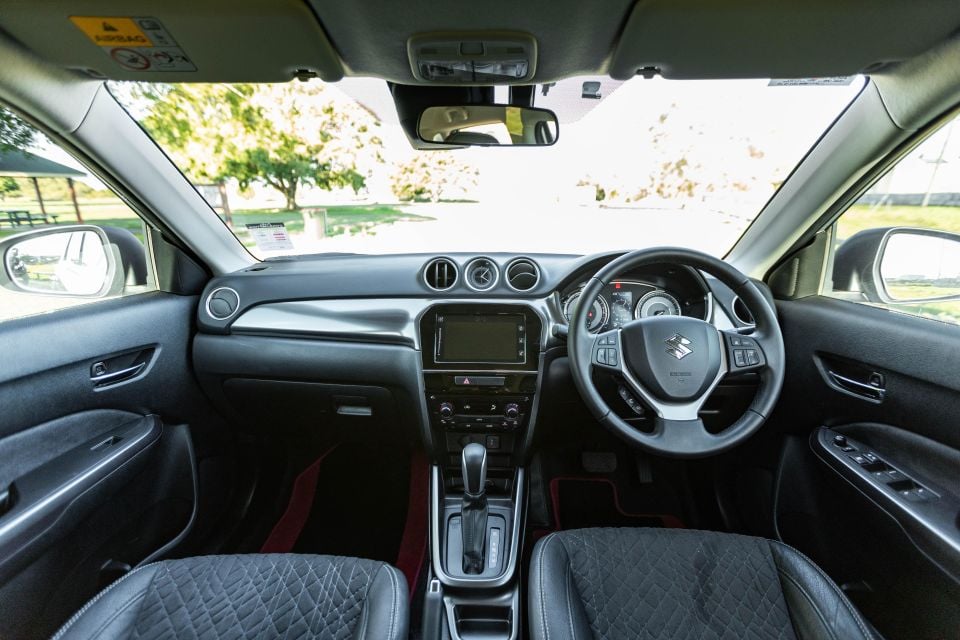
The Vitara has a bit of an old-school Suzuki feel to its interior. That means it’s logically laid-out and feels solidly put together, but it’s not the most modern cabin in this segment.
The interior mightn’t be flashy but there are some neat details. The circular air vents are readily adjustable and, while the silvery analogue instruments don’t offer much contrast in a very monochromatic interior, they’re neat and tie in with the analogue clock sitting atop the centre stack.
Some of the material choices are a bit peculiar. There’s this metal-look trim on the door armrests that doesn’t match the metal-look trim on the dash, the latter of which reminds me of the stuff I contacted my books with in school. The trim on the doors also looks and feels more like polar fleece than suede.
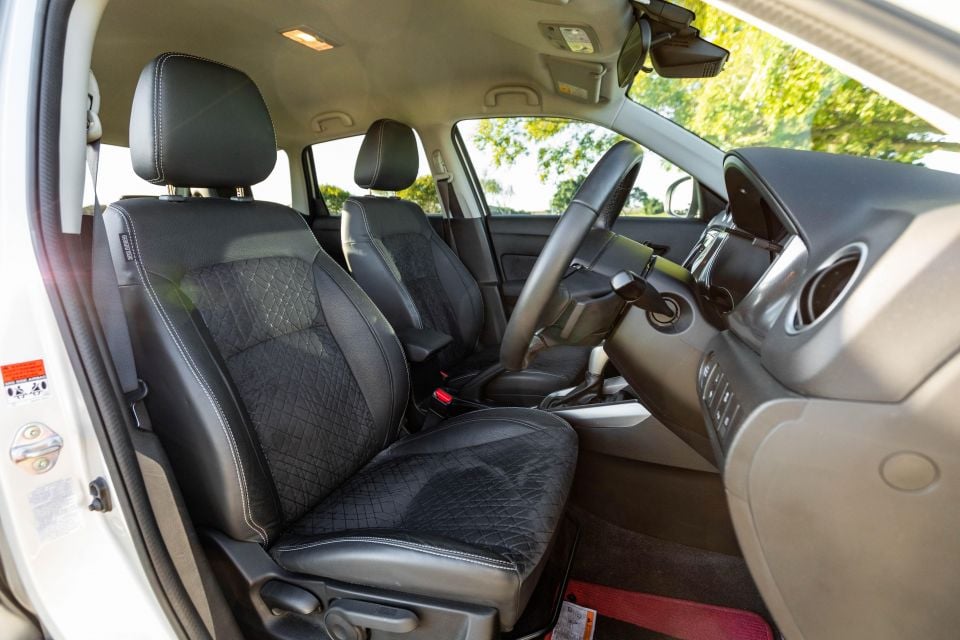
Otherwise, there’s a soft-touch dash top, while the seats are upholstered in suede with leather bolsters.
The quadrant layout of the Vitara’s infotainment system home screen remains logical, though the typefaces and overall size of the screen – 7.0 inches – betrays its age.
The system also isn’t quite as responsive as newer systems from the likes of Hyundai and Kia, though you can use voice prompts for most functions including navigation. You can also avoid using the factory navigation by plugging in your Apple or Android device.
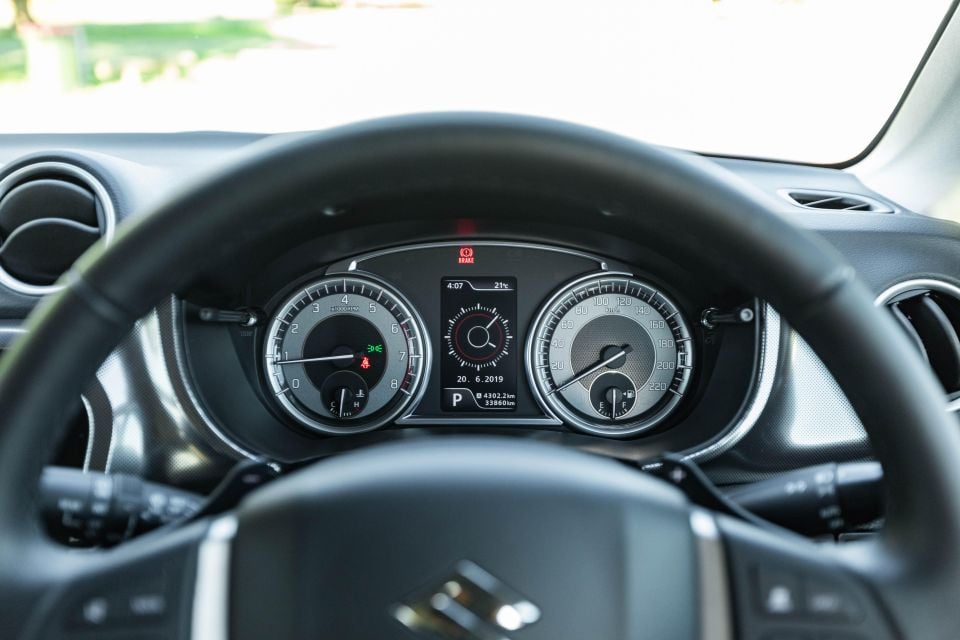

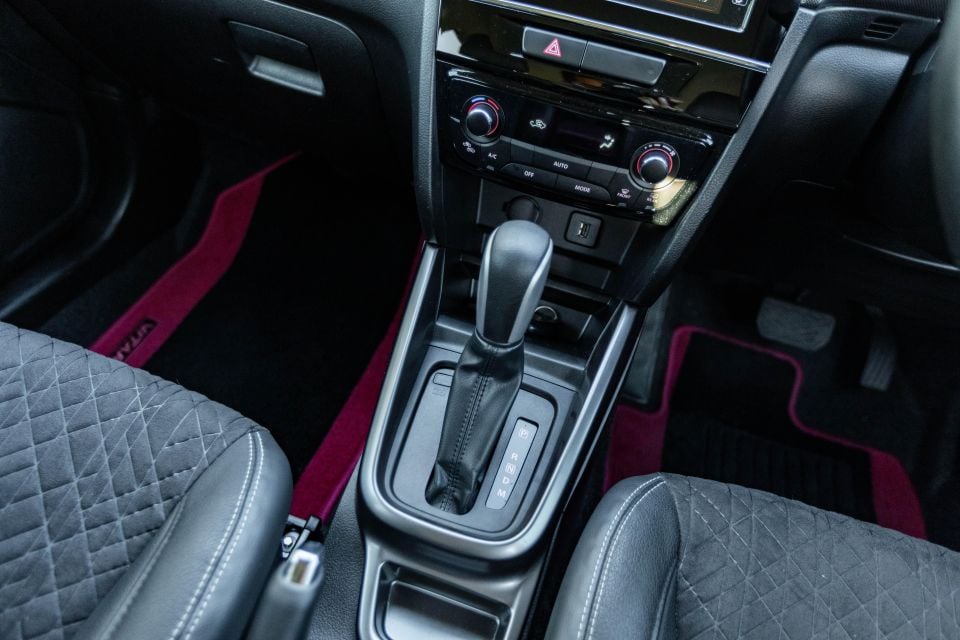
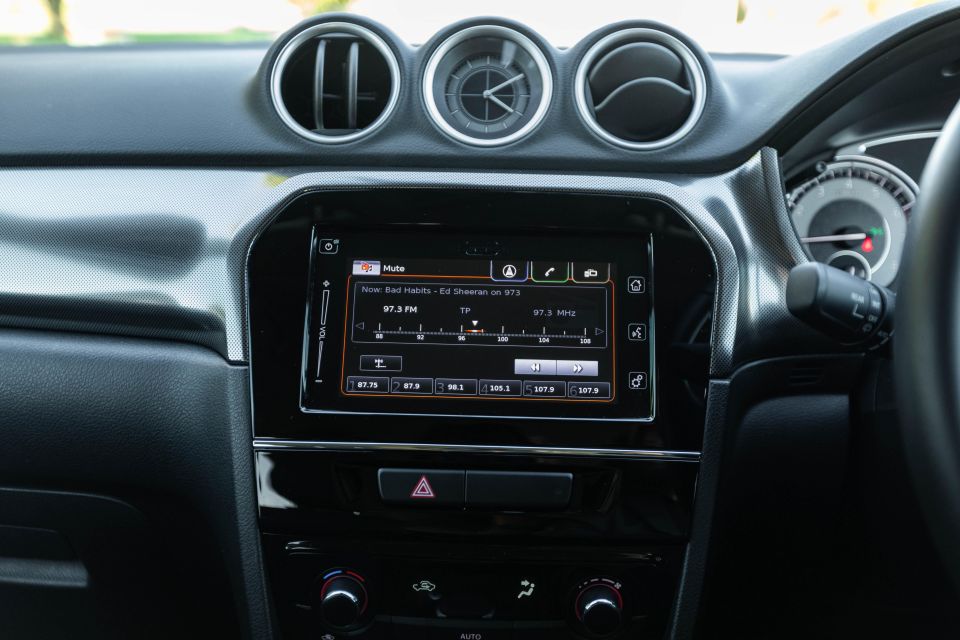
There’s a 4.2-inch screen between the two analogue gauges in the instrument cluster that displays information like fuel economy and cruise control settings. What it lacks, however, is a digital speed readout, which isn’t ideal considering the analogue gauges aren’t the clearest to read.
There’s a single USB outlet up front and a 12V outlet, which sit at the base of the centre stack. This recess features the usual tray for a phone, plus a slightly smaller shelf above.
Other storage includes two cupholders, a centre console bin with a padded lid and a little nook in front of the shifter for coins and small items. Intriguingly, there’s a recess on the right-hand side of the steering wheel that’s large enough to fit most smartphones.
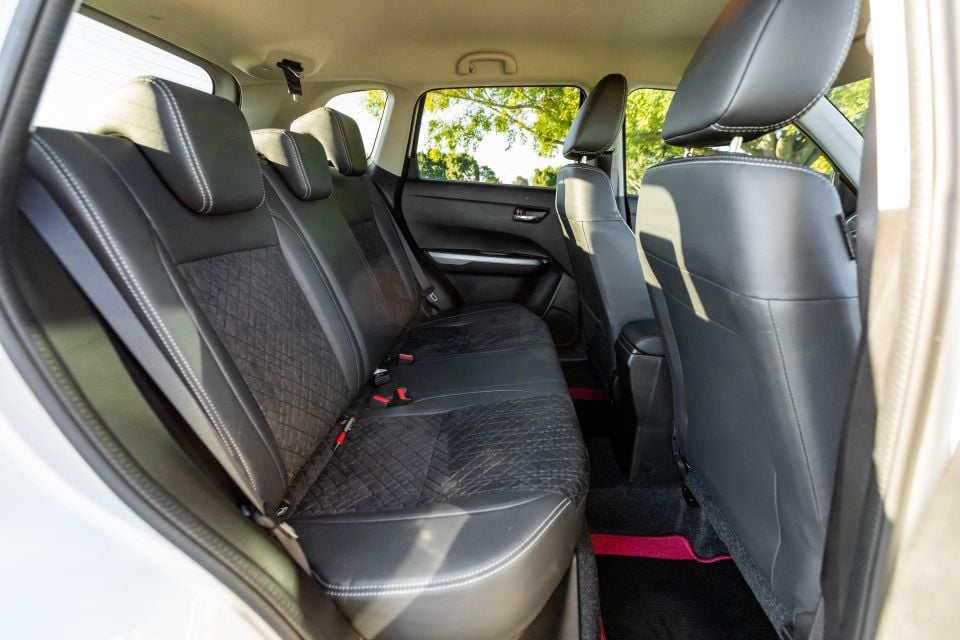
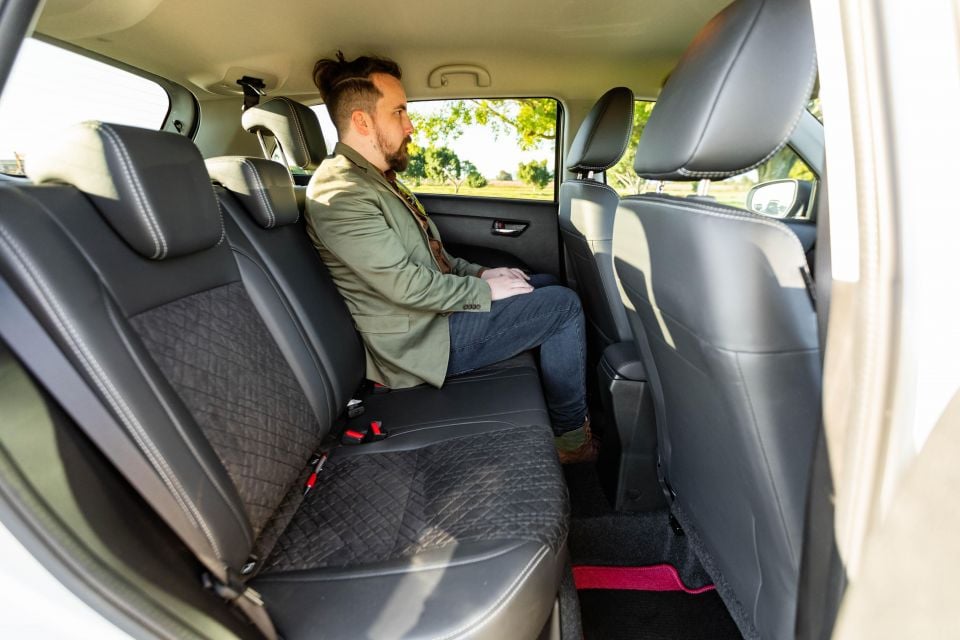
Step into the back and someone 180cm tall can sit behind themselves with plenty of headroom, knee room and toe room.
Where the Vitara doesn’t measure up is in width – at 25mm narrower than a Kona or Seltos and 35mm narrower than an ASX, you’re not going to be sitting three across, let alone squeeze grandma between two child seats. There are three top-tether child seat anchor points, plus ISOFIX anchors for each outboard seat.
The rear doors don’t have any fabric trim to break up the hard injection-moulded plastic, though the front seatbacks are finished in leatherette and the passenger seat has a map pocket.
There are no rear air vents or power outlets, though the bottle holders, like those up front, can easily swallow a 1L bottle.
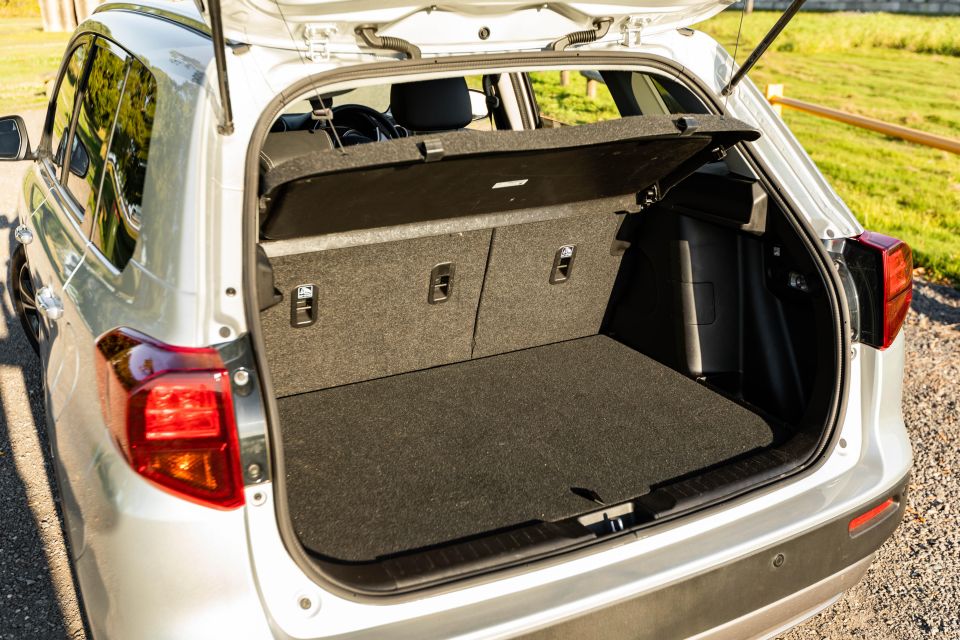
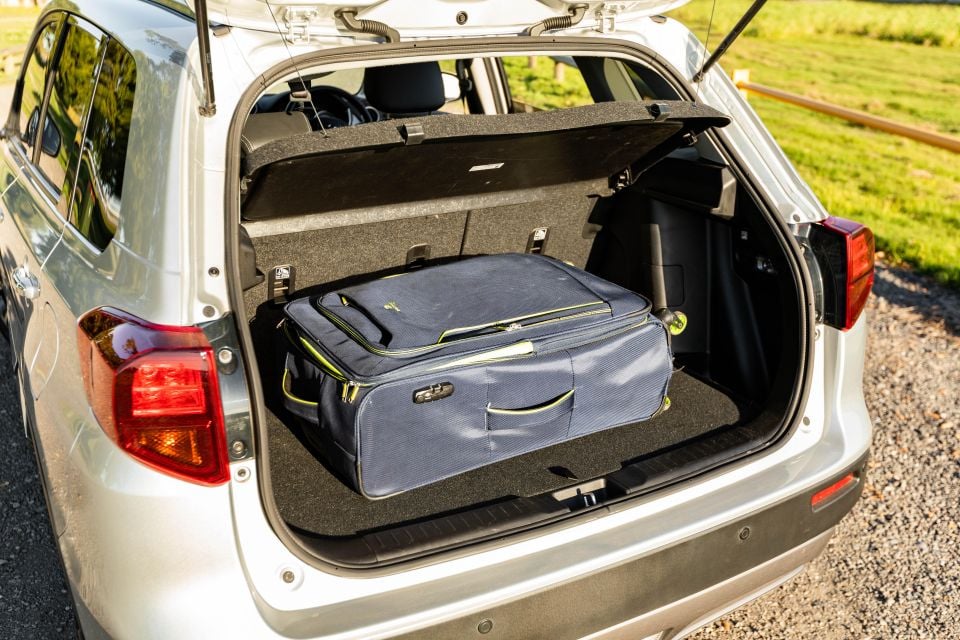
Open the boot and there’s an adjustable floor. A hard, carpeted panel can be removed easily to yield a deeper boot space, underneath which sits a space-saver spare. On either side of the boot floor are two storage nooks that have been partitioned off.
The Vitara’s total luggage space is 375L, increasing to 710L with the rear seats folded. It’s not the largest boot, measuring just 1L more voluminous than a Kona and 18L below an ASX.
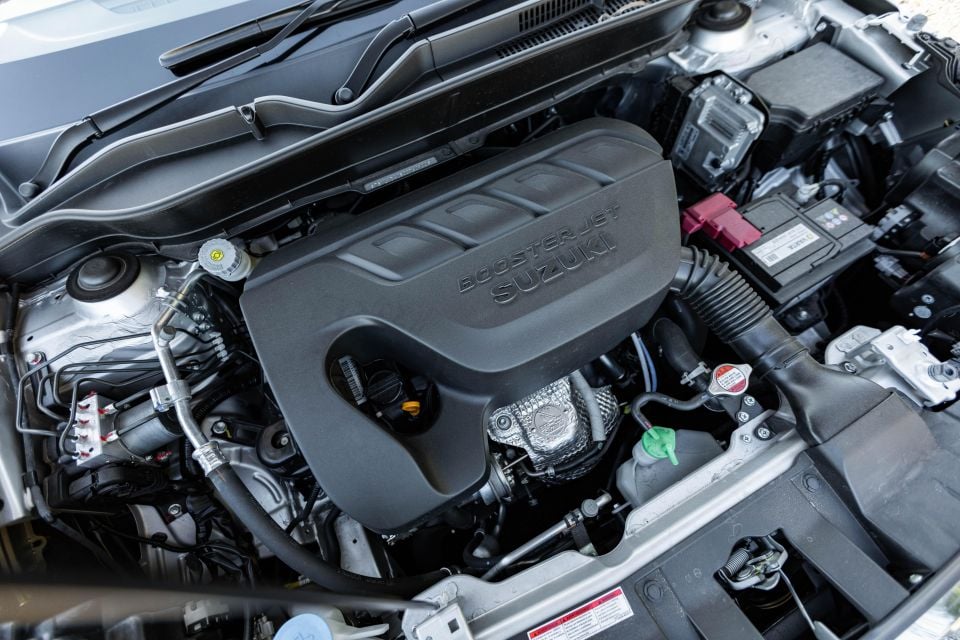
The Vitara Turbo is powered by a turbocharged 1.4-litre four-cylinder engine producing 103kW of power and 220Nm of torque. It’s mated exclusively to a six-speed automatic transmission with paddle shifters. It’s front-wheel drive, though all-wheel drive is available.
Those figures compare favourably with the Jolion Ultra (110kW/210Nm), Kona Elite and Seltos Sport (110kW/180Nm), CX-30 G20 Evolve (114kW/200Nm), Qashqai ST+ (106kW/200Nm) and XV 2.0i-L (115kW/196Nm).
Only a few rivals pack more of a punch. These include the ZST Essence (115kW/230Nm), ASX GSR (123kW/222Nm) and Kamiq 110TSI Ambition (110kW/250Nm).
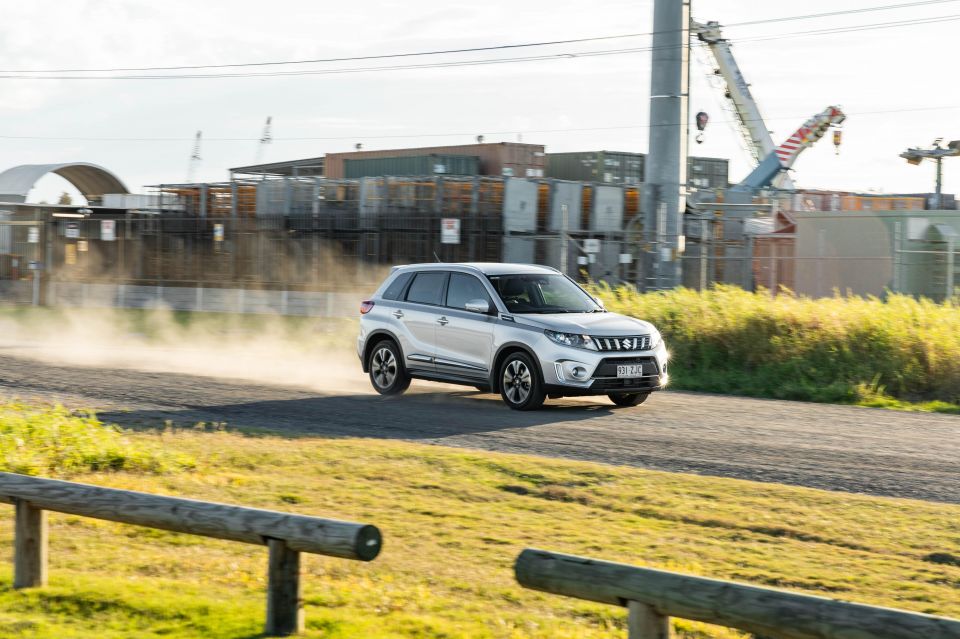
Where expert car reviews meet expert car buying – CarExpert gives you trusted advice, personalised service and real savings on your next new car.
The old-school Suzuki feel carries through to the driving dynamics.
The wheel feels rather thin in your hands, and the steering is communicative. You never feel isolated from the road, as the nicely-weighted steering transmits what’s going on at the wheels.
The same applies to the ride quality. Even the smallest imperfections in the road are felt from behind the wheel but, conversely, the suspension isn’t too harsh over the ruts you’ll find in city streets.
On more ragged rural roads at higher speeds, the Vitara can get jostled about a bit and loses its composure. This was the only time we noticed any rattles in the otherwise tight cabin, and it was only one dull rattle.
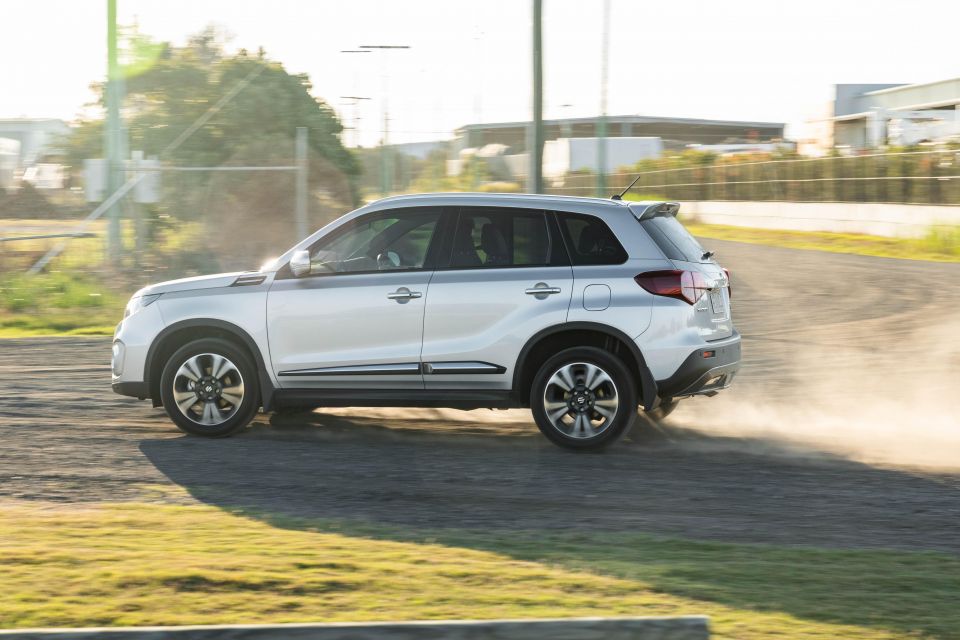
The Vitara’s turbo four is a frisky one. There’s a bit of wheelspin off the line plus a rather sporty engine note. Accelerate with vigour and the Vitara’s engine can be a bit noisy, but peak torque is available from 1500 to 4000rpm so you rarely need to prod the accelerator pedal hard to get the Vitara up and moving.
All of these elements make the Vitara feel rather sporty for a small SUV. Toss it around some corners and it feels a little less top-heavy than some rivals, with a more hatchback-like centre of gravity.
A spirited drive through the mountains proved enjoyable, though the transmission occasionally shuffled back and forth through the gears more than was necessary.
The Vitara makes for a good urban commuter and a surprisingly fun companion on a winding road, though it’s less at home on the highway. Quite simply, too much tyre roar and wind noise enters the cabin. The exterior mirrors start picking up audible gusts at 80km/h and the cabin gets rather boomy at highway speeds.
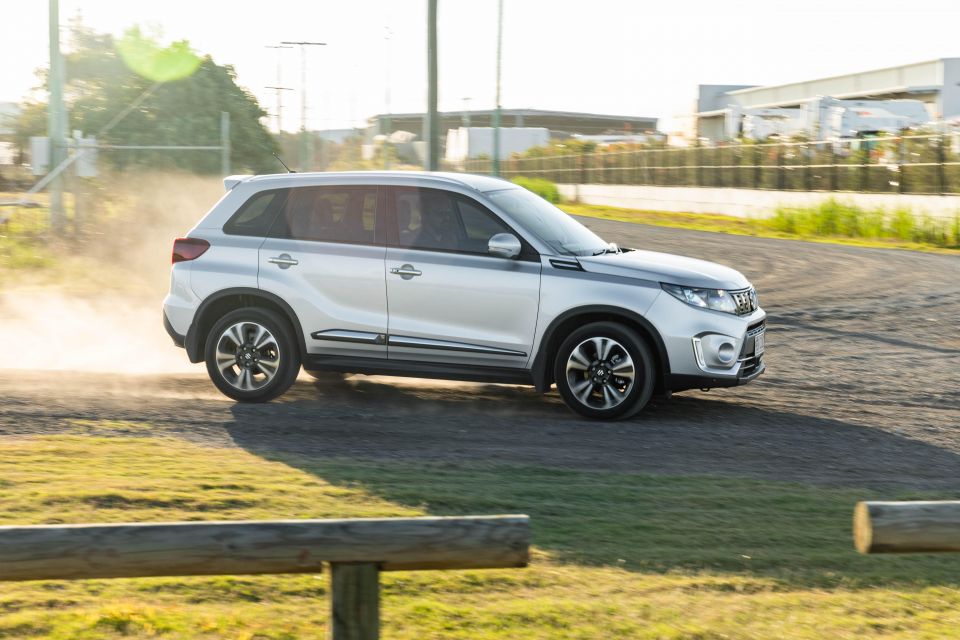
There’s no lane-keep assist, which means the lovely steering remains unperturbed but you can’t enjoy the kind of effortless highway driving you’ll get in a Kona. Instead, there’s a more basic lane-departure warning system that vibrates when you cross a road line. The blind-spot monitoring and rear cross-traffic alert work without issue.
There are paddle shifters behind the steering wheel. The shifter itself has a M option – for manual – but it’s located one detent below D instead of being located to the side.
For your first few days behind the wheel, you may find yourself accidentally shifting into M and wondering why your Vitara won’t get out of first gear. The shifter itself also doesn’t feel as modern and slick in operation as, say, the shifter in a Kona.
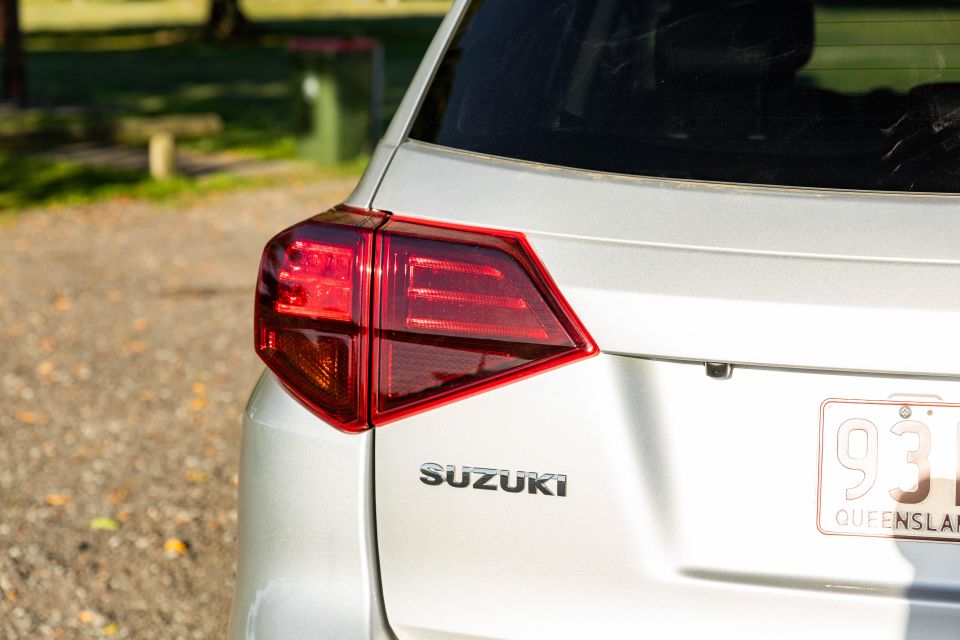
Over a mix of highway, inner-city and suburban driving, we averaged 7.1L/100km. Over the course of a few days, which threw in some highway jaunts and one monstrous traffic jam, that still managed to improve to 6.5L/100km.
The official rating is 5.9L/100km, and the Vitara Turbo requires 95 RON premium unleaded fuel.
The Vitara Turbo requires servicing every 12 months or 10,000km.
In addition to its five-year, unlimited-kilometre warranty, Suzuki offers five years of capped-price servicing for the Vitara. The services are priced at $239, $329, $239, $429 and $239, respectively.
It’s not as cheap to service as a Toyota (what is these days?) but those prices are essentially line-ball with the likes of the Kona and CX-30, though its intervals are on the shorter side.
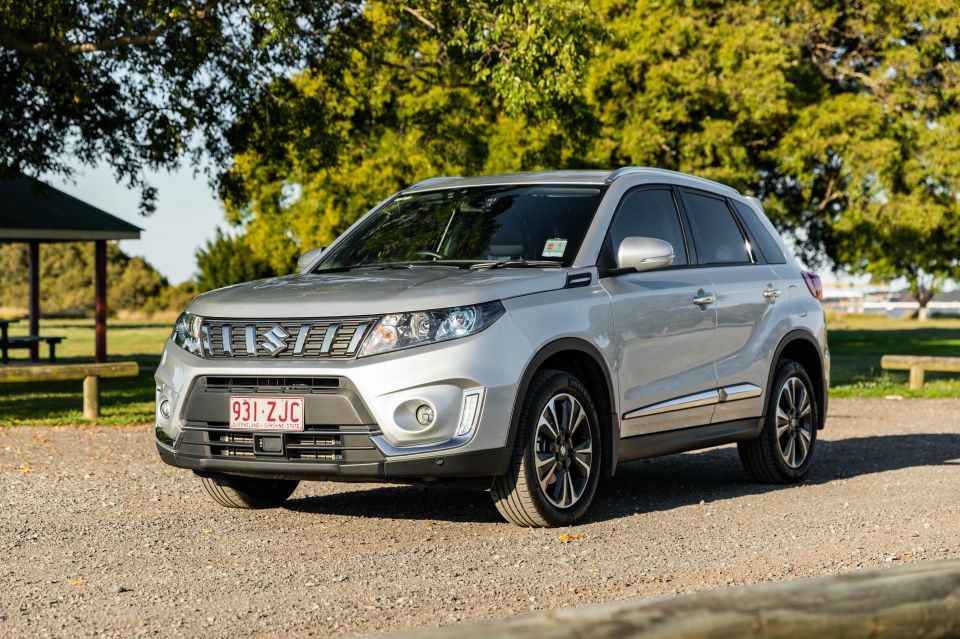
The Vitara Turbo has a familiar feel that should appeal to loyal Suzuki buyers.
Unfortunately, the interior is perhaps too familiar, and doesn’t really move the needle from Suzuki’s cabins of a decade ago.
It also gets noisy at highway speeds and is lacking in some accoutrements, while the rear seat isn’t as roomy as some rivals.

Suzuki’s recent price increases have also made the Vitara’s value for money equation suffer, which is poor timing given the arrival of feature-packed Chinese rivals like the MG ZST and Haval Jolion.
Where the Vitara stands out, however, is in its keen driving dynamics. It also feels well-screwed together, and Suzuki has a commendable record for reliability and durability.
And while the equipment list isn’t as exhaustive as the aforementioned Chinese SUVs, it packs as much equipment as other value entries like the Mitsubishi ASX.
It mightn’t be the last word in interior glitz or refinement, but the Vitara still has plenty to offer.

Click the images for the full gallery
MORE: Everything Suzuki Vitara
Where expert car reviews meet expert car buying – CarExpert gives you trusted advice, personalised service and real savings on your next new car.
William Stopford is an automotive journalist with a passion for mainstream cars, automotive history and overseas auto markets.


William Stopford
5 Hours Ago


Ben Zachariah
6 Hours Ago


Derek Fung
6 Hours Ago


Matt Campbell
13 Hours Ago


William Stopford
1 Day Ago


Josh Nevett
1 Day Ago